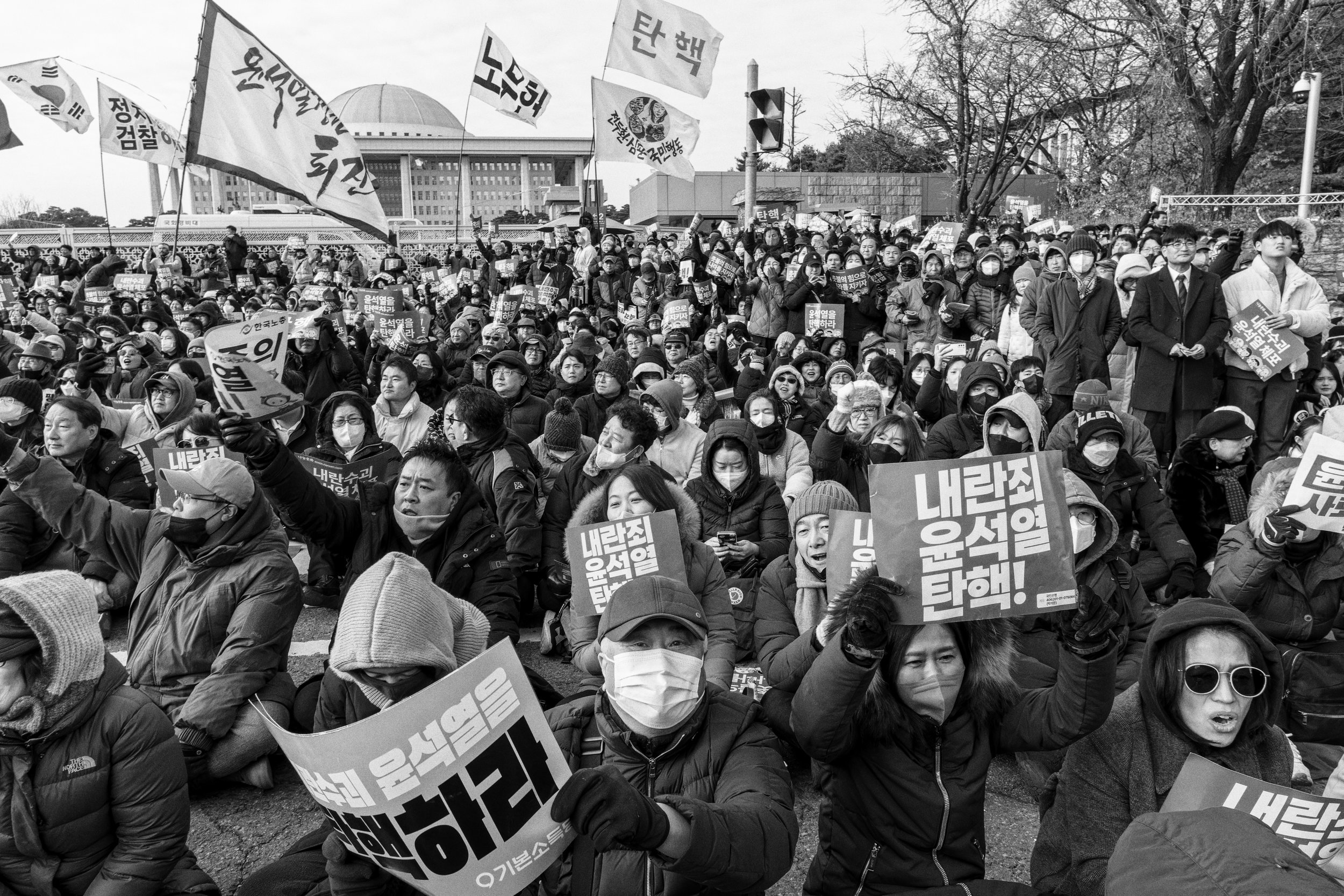
Rite of Resist
Crisis in South Korea, December 2024–April 2025.
RITE OF RESIST
December 3, 2024, 10:23pm: A declaration of Emergency Martial Law.
December 7: Massive rallies engulf Korea, calling for the president’s impeachment.
December 14: The National Assembly successfully passes an impeachment motion.
January 2025: Standoffs over an arrest warrant nearly turn violent.
January–April 2025: “candlelight protests” rock Seoul for months.
April 4, 2025, 11:22am: The Constitutional Court sustains the impeachment motion and removes the president.
Project statement
December 3, 2024: a televised address plunges South Korea into chaos on a quiet Tuesday night. A would-be despot drags a country back to the brink of its brutal past. A people rise up in their tens of thousands to defend their fragile democracy.
Contrary to popular Western belief, democracy in South Korea is not a birthright. It is hard-won freedom – earned after decades of violent military rule. With his approval rating in freefall, then-president Yoon Suk-Yeol took a page from the authoritarian playbook and declared emergency martial law on December 3, 2024. The Korean public erupted without hesitation in a fury of resistance. They poured onto the streets with a singular demand – impeach and remove Yoon.
The impeachment process that followed was far from straightforward – or guaranteed. Four months of standoffs, political battles, and economic fallout brought the Korean public to a boiling point.
On December 7, 2024, a walkout by members of Yoon’s party rendered an impeachment vote invalid in the National Assembly, as an estimated two hundred thousand awaited the result just outside the building. Exactly one week later, a second vote succeeded in temporarily removing Yoon from the office pending a decision by the Constitutional Court, Korea’s highest court, on whether to sustain or dismiss his impeachment – a decision that wasn’t to come until April of the following year. In the four months between these decisions, unresolved divisions within Korean society were brought to the forefront, deepening a sense of polarization on the peninsula.
During this long political standoff, “candlelight protests” mobilized tens of thousands from every corner of Korean society. Reprising the cadence of protests against Park Geun-Hye in 2017, they took to the streets of Seoul day after day, in the bitter Korean winter, to voice their demands. Protest signs, marches, and cries of “Impeach!”, “Investigate!”, “Arrest!”, and “Dismiss!” soon became part of Seoul’s urban landscape. This time around, protesters traded their candles for K-pop light sticks with custom messages calling for immediate impeachment and dismissal.
Rite of Resist is a record of one of the most volatile episodes in South Korea’s democratic history. It’s the story of a people who refused to stand down in the face of tyranny – and it shines a light on the individuals who stood at the frontlines of resistance. While their goals were ultimately met, a question hangs heavily within South Korean society, now faced with the reality of two impeached and removed presidents in less than a decade: What now?




